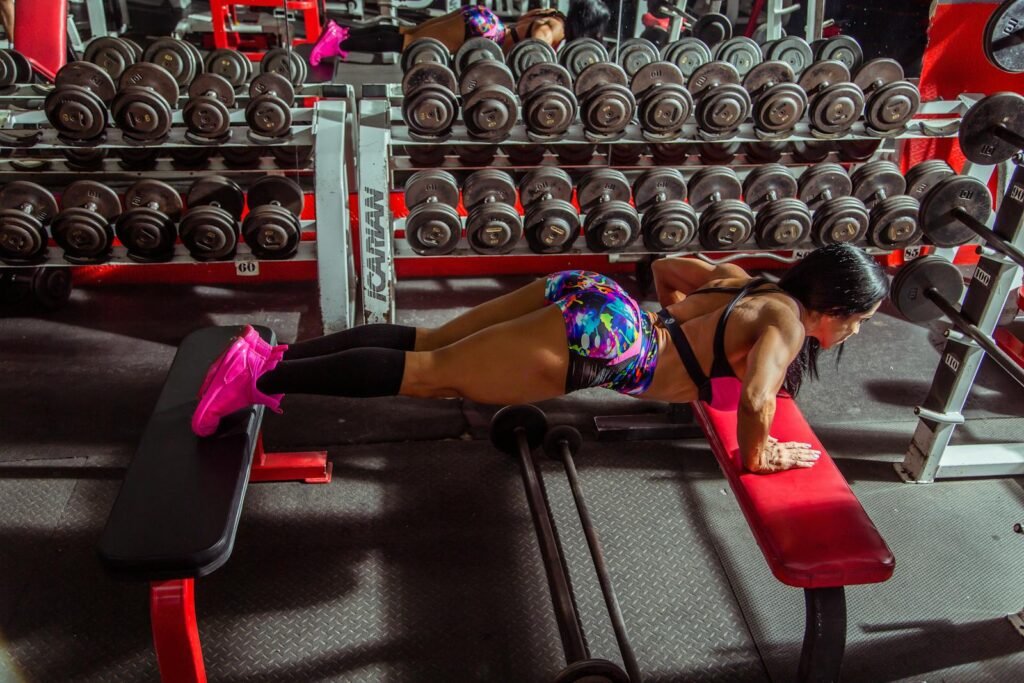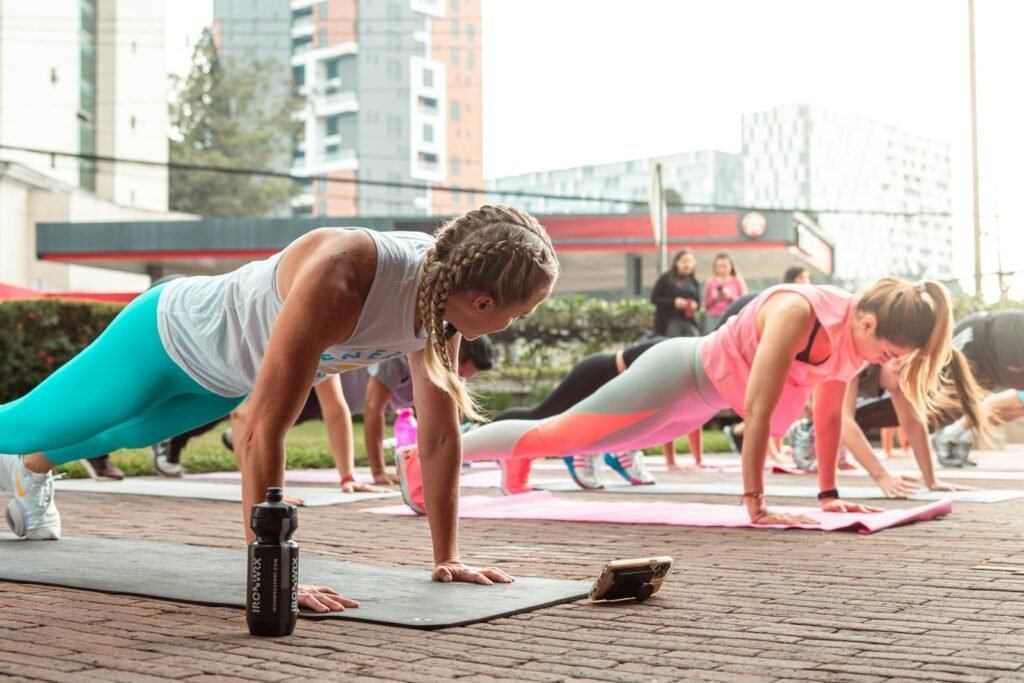Standing in front of the mirror, I couldn’t ignore the fat around my midsection. I had always dreamed of getting a “six-pack.” So, I decided to share my journey to a stronger core with you.
Key Takeaways
- Engage your core muscles with a variety of ab exercises to target all abdominal groups
- Incorporate both static and dynamic exercises to build overall core strength and stability
- Consistency is key – commit to a regular ab workout routine for optimal results
- Proper form and technique are essential to avoid injury and maximize the effectiveness of each exercise
- Pair ab workouts with a balanced diet and cardiovascular training for a complete fitness plan
Understanding Your Core: More Than Just Abs
The core muscles are key in fitness, but they’re more than just abs. They include a group of muscles that help stabilize the spine and support the body. They also improve physical performance.
Components of Core Muscles
The core muscles are made up of several parts. The rectus abdominis, or “six-pack” muscles, are the most visible. But the transverse abdominis, which wraps around the abdomen, is vital for spine stability and organ support.
Role of Core in Overall Fitness
The core muscles are the base for all movement. They connect the upper and lower body. A strong core improves posture, balance, and stability, reducing injury risk.
It helps athletes and everyday people perform better. A strong core makes movements more efficient and easier.
Benefits of Strong Core Muscles
Having a strong core offers many benefits:
- Improved posture and stability
- Reduced risk of back pain and injury
- Enhanced athletic performance and movement efficiency
- Better balance and coordination
- Increased overall strength and power
Adding core-strengthening exercises to your routine is vital. It boosts physical and mental health. Knowing the full scope of core muscles helps unlock your body’s full strength and reach fitness goals.
“A strong core is the foundation for all movement, serving as the link between the upper and lower body.”
Essential Ab Workouts for Beginners
Building a strong core is easy to start. Beginners can do a few simple exercises that work the whole midsection. These include planks and crunches, which are great for everyday strength and fitness goals.
The plank is a key beginner ab exercise. It works the abs, shoulders, and legs. Make sure your shoulders are over your wrists and your body is straight. Hold for 50 seconds, rest for 10, then do it again.
The seated straight-leg lift is another great core workout for beginners. Lie on your back with legs straight and arms by your sides. Lift your legs, aiming for your toes to reach the ceiling. This strengthens the lower abs.
The bird dog is a full-body crunch variation. Start on all fours, then lift your opposite arm and leg. Keep your spine straight. This improves core stability and strengthens your midsection.
- Deadbug: Engage the core while extending the arms and legs.
- Side Plank: Target the obliques for a well-rounded core workout.
- Toe Touch: Emphasize lower ab activation.
- Tabletop With Knee Tap: Challenge core engagement and stability.
- Single-Leg Stretch: Modify bicycle crunches for a beginner-friendly core exercise.
Start with these beginner ab exercises and focus on form. As you get better, increase the time and intensity. Remember, being consistent and patient is important for a strong core.
Advanced Core Strengthening Techniques
To take your core training to the next level, try new exercises and techniques. These workouts target your abs and engage your entire core. They also work on stabilizing muscles. Adding these exercises to your routine will make your core strong, improving your power and stability in all activities.
Plank Variations and Progressions
The plank is a classic core exercise, but you can make it more challenging. Try side planks, renegade rows, and hand-release planks. These moves work your obliques and lower back. As you get better, try hollow holds or V-sits for even more strength and control.
Dynamic Movement Exercises
Adding dynamic exercises to your routine can boost your core training. Mountain climbers and burpees are great. They work your core, raise your heart rate, and give a full-body workout. These exercises improve coordination, balance, and strength, making your core stronger.
Stability Challenges
Stability challenges can really change your core workout. Doing exercises on unstable surfaces, like a BOSU ball, makes your core work harder. Planks and V-sits become much harder, leading to better muscle activation and stability.
Remember, getting better takes time and patience. Start slowly, adding these advanced exercises to your routine. Focus on form and increase the difficulty as you get stronger. With these exercises, you’ll not only look great but also support your fitness and athletic performance.
Building Six-Pack Abs: Foundation Exercises
Many people dream of having six-pack abs. But, it’s not just about doing endless crunches. To get visible abs, you need a solid core workout that targets all muscles. Let’s look at some key exercises for building six-pack abs.
The situp is a classic for working the abs. Done right, it hits the upper, middle, and lower abs. Make sure to curl up fully, almost touching your knees. The crunch focuses on the upper abs, with a smaller movement.
Leg raises are great for the lower abs. Lie flat, legs straight, and lift them up slowly. Avoid swinging. The plank works the whole core. Hold it for 30 seconds to 1 minute, keeping your body straight.
Russian twists are key for obliques. Sit on the floor, lean back a bit, and twist your torso. Keep your feet up or on the ground for balance.
Consistency and correct form are vital for six-pack abs. Add these exercises to your routine and stay patient. A strong core improves your body function and sports performance.
“Achieving a six-pack isn’t just about the physical transformation; it’s a testament to your dedication, discipline, and commitment to a healthy lifestyle.” – Fitness Expert, John Doe
Effective Ab Workouts for Maximum Results
Getting a strong, sculpted core needs variety. Mix exercises that target different parts of your abs for great results. Here are some top ab workout routines to boost your progress.
Crunch Variations
The classic crunch is a must, but try new ones too. Bicycle crunches and reverse crunches work your obliques and lower abs. The double crunch targets your whole abdominal area.
Rotational Movements
Rotational exercises are key for a balanced core. Russian twists and wood choppers are great for your obliques and spinal mobility.
Anti-rotation Exercises
Exercises that resist rotation are also important. The Pallof press and bird dog movements are perfect for core stability.
For your ab workout, do 3-4 sets of 10-15 reps for each exercise. Focus on controlled movements and proper form. This balanced routine will help you achieve the best results and unlock your core’s full power.
| Exercise | Description | Reps |
|---|---|---|
| Bicycle Crunches | Engage your obliques by touching your elbow to the opposite knee. | 12-15 per side |
| Reverse Crunches | Bring your knees toward your chest, lifting your hips off the floor. | 10-12 reps |
| Russian Twists | Rotate your torso from side to side, keeping your feet off the floor. | 12-15 reps per side |
| Pallof Press | Hold a resistance band or cable in front of your chest and press it out, resisting rotation. | 10-12 reps per side |
Consistency is key for a strong core. Add these effective ab workout routines to your routine. You’ll be on your way to unlocking your full ab strength.
Combining Cardio with Core Training
Adding core exercises to your cardio routine can really boost your fitness. It combines cardio and ab workouts in a way that burns calories and strengthens your core. This mix also increases your endurance.
Try adding mountain climbers, burpees, and high knees to your HIIT routines. Do 30 seconds of hard work followed by 15 seconds of rest. Switch between cardio and core exercises for a workout that challenges your whole body.
- Add plank jacks and jumping lunges with torso twists to your HIIT circuit for a targeted core workout.
- Engage your cardio ab workouts and core-focused HIIT for a potent combination that ignites fat-burning exercises.
Spending 20-30 minutes, 3-4 times a week, on this mix can really improve your fitness. It blends cardio and core training in a way that makes your workouts more effective.
“The key to unlocking your full cardio ab workouts and core-focused HIIT lies in the synergy between cardio and core training. Embrace this powerful combination and watch your fitness soar.”

Equipment-Based Ab Exercises
Bodyweight exercises are great for a strong core. But, adding special equipment can boost your results. Tools like medicine balls, resistance bands, and ab wheels offer unique challenges. They help you get that six-pack look.
Medicine Ball Workouts
Medicine ball exercises are excellent for your abs. Try slams, Russian twists, and wall ball throws. These moves engage your core, build power, and improve stability and coordination.
Resistance Band Exercises
Resistance bands are great for strengthening your core. Try Pallof press, anti-rotation holds, and standing twists. These exercises help your core resist rotation and stay stable. They’re perfect for functional strength.
Ab Wheel Routines
The ab wheel is a classic for a tough workout. Start with knee rollouts, then move to standing rollouts as you get stronger. It targets your abs, obliques, and lower back for a full core workout.
When using equipment for ab exercises, focus on proper form. This avoids injury and makes the exercises more effective. If you’re new, consider a certified trainer’s help.
| Exercise | Reps/Duration |
|---|---|
| Seated Crunch Machine | 10-12 reps |
| Rotary Torso Machine | 10-12 reps per direction |
| Decline Bench | 10-12 reps |
| Captain’s Chair | 10-12 knee raises |
| Assisted Pull-up Machine | 10-12 reps |
| Rower | 5-10 minutes |
| GHD Machine Sit-ups | Advanced exercise |
Adding equipment-based exercises to your routine can make your workouts more varied. It challenges your core in new ways and helps you reach your fitness goals. Start with lighter weights and increase as you get stronger.
Recovery and Progression Tips
Keeping up with your ab workout routine is essential. But don’t forget to focus on recovery and progression for the best results. As you start your core strengthening journey, remember these tips to boost your gains and avoid injuries.
First, give your body enough time to recover between tough ab workouts. Aim for 24 to 48 hours of rest after intense core sessions. This rest helps your muscles fix and grow, preparing you for more progress.
To progress, slowly make your ab exercises harder. You can do this by adding more reps, sets, or trying new exercises. The goal is to challenge yourself but not too much to avoid injury.
- Start with a proper warm-up and cool-down to get your body ready and aid recovery.
- Drink plenty of water and eat well to help your muscles recover and grow.
- Listen to your body and don’t overdo it. If you feel tired or uncomfortable, adjust your workout plan.
- Keep challenging your core by changing the angle, adding instability, or using more resistance.
By following these ab workout recovery, core exercise progression, and injury prevention tips, you’ll build a strong, functional core. This will help you reach your fitness goals.
| Metric | Range |
|---|---|
| Maintenance Volume (MV) | 0 to 4 sets |
| Minimum Effective Volume (MEV) | 0 to 4 sets |
| Maximum Adaptive Volume (MAV) | 4 to 12 sets |
| Maximum Recoverable Volume (MRV) | 12 to 20 sets |
| Maximum Adaptive Volume (Primary Priority) | 16 to 24 sets |
| Maximum Recoverable Volume (Primary Priority) | 24 sets and above |

“Adding new ab exercises improved my muscle tone and flexibility. Progressing by adding weights or changing tempo made my workouts more effective.”
Common Mistakes to Avoid During Ab Training
Getting a strong, chiseled core is all about avoiding common mistakes. Wrong form, too much training, and ignoring overall fitness can slow you down. It can also hurt you. Let’s look at the main mistakes to avoid for the best ab training results.
One big mistake is bending your spine too much during crunches. Keeping your spine neutral is key to working your abs right and avoiding back pain. Also, in planks and other core exercises, don’t let your hips sag. This can mess up your form and make the exercise less effective.
Not breathing right is another common error. It’s important to breathe out when you’re pushing during the exercise. This helps activate your core and get the muscles to work right.
Another mistake is doing too many reps without focusing on quality. It’s better to do fewer, controlled movements that really challenge your core. This is more effective than doing lots of sloppy reps.
- Don’t just do ab exercises for fat loss. Mix core workouts with a full fitness routine and a healthy diet for the best results.
- Don’t forget about other core muscles. Include exercises for your obliques and lower back to strengthen your core fully.
“Achieving a strong, defined core requires a holistic approach, not just endless crunches. Mastering proper form, balancing exercises, and incorporating a healthy lifestyle are key to unlocking your full ab-toning.
By avoiding these common mistakes and focusing on proper technique, varied training, and a healthy lifestyle, you’ll be on your way to the abs of your dreams.
Conclusion
Effective ab workouts are key to a strong, balanced core. Knowing the core muscles and their role in fitness helps you create a good training plan. Mix exercises that work on balance, hinging, and rotation to engage all muscles.
Start with simple exercises and gradually add more. Always focus on proper form to avoid injuries and get the most out of your workouts. Adding core exercises to your fitness routine helps you reach your goals and improves your daily life.
Getting a toned midsection is more than looks; it’s about building a strong base for your health and performance. Stay committed, and you’ll see the benefits of a strong, stable core.




